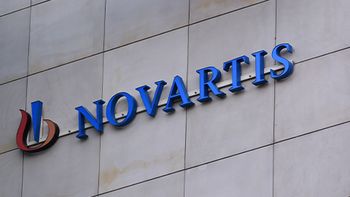
Viagra launch commands attention
The launch of Viagra, Pfizer's new oral medication for erectile dysfunction, invigorated an otherwise sleepy sexual dysfunction market, sparked debate among health plan insurers and established itself as the most successful launch ever.
The launch of Viagra, Pfizer's new oral medication for erectile dysfunction, invigorated an otherwise sleepy sexual dysfunction market, sparked debate among health plan insurers and established itself as the most successful launch ever.
Pfizer launched the product in late March and, within days, more than doubled the number of prescriptions written in the sexual dysfunction market, according to data from IMS America, Plymouth Meeting, PA.
Before the launch, the number of prescriptions for sexual dysfunction, which affects approximately 30 million American men, hovered around 20,000 per week. Within one week of Viagra's availability on the market, that number jumped above 36,000. Within two weeks, IMS America data indicated that the number of prescriptions written had escalated to nearly 130,000; by the end of Viagra's first month on the shelves, almost 570,000 prescriptions had been written for the product, according to Newton, PA-based Scott-Levin.
The immediate success of the product established it as the most successful launch in pharmaceutical history. For contrast, consider the launch of Pfizer's Lipitor, which many considered to be one of the industry's best launches. It cornered a mere 26,000 new prescriptions in its first month. Or consider Wyeth-Ayerst's launch of the anti-obesity medication, Redux, also considered by many to have been a blockbuster launch. It garnered 149,000 prescriptions in its first month.
During Viagra's first week, urologists wrote one-half of its prescriptions and primary care physicians accounted for one-third of its prescriptions, according to IMS America. By the end of the month that proportion flipped; one-half of the prescriptions written in week four were written by primary care physicians and one-third were written by urologists.
Nothing's perfect
Viagra's launch hasn't been flawless. Who will pay for the product, for example, and how many pills are reimbursable have quickly become matters of contention.
Atypically, half of the patients who received a prescription for the product paid their pharmacists in cash. Third-party sources picked up the remaining half. On average, cash reimbursement for prescriptions is less than 25%, with the remainder paid by third-party sources.
With Viagra, third-party sources, such as managed care plans, are expressing unwillingness to cover prescriptions. Fallon Healthcare Systems, Aetna Inc., Kaiser Permanente and Prudential Insurance are just a few of the health plans holding off on coverage indefinitely.
Not surprisingly, individuals who belong to such health plans are not pleased. One man in New York has even filed a class action lawsuit against Oxford Health Plans, who informed him it will not cover any Viagra prescriptions for at least 45 days after May 1, 1998.
Those plans that have agreed to pay for prescriptions for Viagra are quibbling over how many pills are really necessary each month. Pfizer markets three different dosages of Viagra in bottles of 30 tablets in three dosage strengths, which are selling for anywhere from $8 to $12 each. Some insurers have agreed to cover only half the number in a bottle; others will reimburse for even fewer. Medicare's position on reimbursement for the product was undecided at press time. PR
Newsletter
Lead with insight with the Pharmaceutical Executive newsletter, featuring strategic analysis, leadership trends, and market intelligence for biopharma decision-makers.




